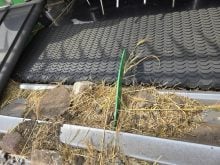Late maturing crops and the prospect of an extended harvest could result in heavy demand for custom grain drying services across the Prairies this fall.
Grant McLean, crop specialist with Saskatchewan Agriculture, said crops across the West are well behind schedule and drying days will be at a premium this fall.
In Saskatchewan, just three percent of the province’s crop had been harvested as of Aug. 25.
That’s well below the five year average of 16 percent.
Manitoba crops are also late and maturity has been further delayed by cool, damp weather over the past few weeks.
Read Also

Manitoba extends Crown land rent freeze
Manitoba government links the continued rental rate freeze on grazing and forage leases to economic and environmental challenges facing the industry
Ralph Howes, a production economics specialist with Saskatchewan Agriculture, said custom grain drying costs could be slightly lower this year, based on lower energy costs.
Howes said producers who dry their own grain or pay for custom drying services may benefit from lower prices for natural gas and propane.
In its 2008-09 Custom Rates and Rental Guide, Saskatchewan Agriculture estimated the cost of custom grain drying services for wheat at 17 cents per bushel for each percent of moisture removed between 17.5 percent and 14.5 percent moisture.
That price assumed an air temperature of 0 C, a propane price of 65 cents per litre, and consumption of 79 litres per hour using a continuous or batch dryer rated at 300 bushels per hour capacity. Using a 600 bu. per hour dryer, costs dropped to 11 cents per bu.
However, Howes acknowledged that energy prices have dropped significantly since those estimates were published.
This spring, Saskatchewan consumers who buy natural gas through Sask-Energy saw rates drop 21 percent to $5.96 a gigajoule.
Officials from SaskEnergy said the crown utility might submit an application for further rate reductions in mid- to late-September.
If an application is submitted, approved by the Saskatchewan Rate Review Panel and implemented by cabinet, Saskatchewan consumers could be looking at further reductions to natural gas rates as early as Nov. 1.
In Alberta, consumer prices for natural gas have also dropped significantly over the past year.
Regulated prices through Direct Energy Regulated Services range from $2.91 per gigajoule to $3.17 a gigajoule, not including delivery charges.
A year ago, prices ranged from $11.23 to $12.69 per gigajoule.
Alberta’s competitive rates for five-year delivery contracts have also fallen. They ranged from $5.99 to $8.99 per gigajoule as of late August.
Propane prices are also lower this year.
Barry Romaniuk, regional sales manager with Superior Propane’s prairie region, said demand for propane is likely to be high this year but prices are favour-able for agricultural users.
“At this point in time, we’re expecting there’s going to be a fairly heavy grain drying season coming up,” Romaniuk said.
“In Manitoba, we’ve had a lot of rain this year and there’s still a lot of crop to come off the fields and a lot of it’s going to be coming off fairly wet unless we can get some prolonged sunny days.”
According to Romaniuk, producers in most parts of Saskatchewan and Manitoba could buy propane for roughly 35 cents a litre in late August, farm delivery included.
At the same time last year, they were paying roughly 55 cents, he said.
“This year, propane prices are a lot lower,” he said.
“Last June, a barrel of oil was around $147 a barrel. That same barrel of oil (this year) is around $71 … not that propane directly follows oil but there is an indirect relationship there.”
Fuel costs are only one factor that determines custom drying rates but savings realized through lower energy rates can add up.
In Saskatchewan, for example, a farmer who had 20,000 bu. of barley at 19 percent moisture last year would have spent roughly $891 on natural gas to dry that barley down to 14.8 percent moisture ($8.91 per gigajoule x 100 gigajoules).
This year, after the recently implemented 21 percent reduction in consumer gas rates, the same farmer would spend $596 on natural gas, assuming all other variables were unchanged.
That’s a saving of nearly $300.
Terminal rates vary
Custom drying rates at country terminals also vary by region depending on fuel costs, labour costs, drying capacity, available storage space and local demand for drying services.
In northeastern Saskatchewan, Neil Lajoie, operations manager at Viterra’s Tisdale, Sask., terminal, said custom drying rates have yet to be determined for the approaching harvest season.
Last year, the facility charged $3.50 per tonne per point of moisture in cereal crops and $4 per tonne per point in oilseeds.
Lajoie said the facility’s dryer could be busy this fall, given the late harvest and the dwindling potential for natural drying.
“I’m anticipating this year’s going to be a busy one,” he said.
Neil Boser, facility manager at the North West Terminal in Unity, Sask., said rates will likely be similar to what they were last fall.
Last year, the terminal charged 13 cents per bu. to dry wheat delivered at 16.5 percent moisture and 23 cents per bu. to dry wheat delivered at 18 percent moisture.
Boser said blending opportunities vary from year to year depending on the amount of grain already in storage at the facility.
If more grain comes off the fields tough or damp, blending opportunities will be limited, he added.
“We’ll normally blend as much as we can but in a year like this, I expect there will be quite a bit of drying going on,” he said.
“If we have to fire up the dryer, the farmer will have to pay for it.”
At Unity, Sask., Howes said farmers should compare custom drying rates and shop around for good rates.
The websites of provincial agriculture departments contain information on drying costs and custom rates.















